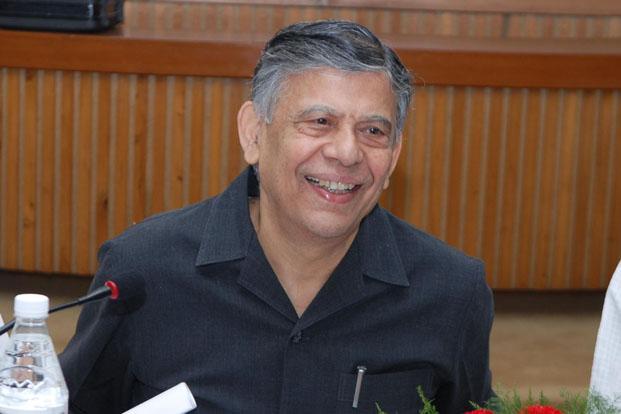India should start with a uniform low rate GST
Live mint
By Ragini Bhuyan
Fri, Feb 03 2017. 09 23 AM IST
Economic empowerment of mothers means children get more rewards and less punishment

A file photo of eminent economist Vijay Kelkar. Photo: Mint
Vijay Kelkar, one of India’s most eminent economist and policymaker, delivered the fifth C. D. Deshmukh Lecture organized by National Council of Applied Economic Research. Speaking on Reflections on the Art and Science of Policymaking Kelkar made a case for promoting a competition driven market economy in India.
Kelkar cautioned that benefits of competition and reforms can be seriously compromised if governments and policymakers fail to ensure that there are no market failures.
This, Kelkar said, requires building state capacity to design effective incentives and balance pros and cons of policy interventions.
State capacity, Kelkar added, should be built step by step by tackling easy objectives first.
Citing the GST as an example, he argued that it is better to build a single, low rate GST first, and move on to more complex high rates and multiple rates later. He stated that India needs to build independent institutions and encourage an atmosphere of debate and dissent to improve policymaking.
A family which has at least one member enrolled in a higher educational institution spends at least Rs15 in education for every Rs100 of its total expenditure. These findings are taken from a recent paper authored by S. Chandrasekhar, P. Geetha Rani and Soham Sahoo from the Indira Gandhi Institute of Development Research Mumbai, Central University of Tamil Nadu, and University of Goettingen, respectively, which has analyzed National Sample Survey Organisation (NSSO) data. The paper also shows that those in southern states of the country are more likely to be enrolled in professional courses in private institutions. Given the high fees in such institutions, students from these states also account for around 70% of total educational loans in India. Overall, the share of households with outstanding educational loans in India is less than 2% in the country. The paper finds that poor are less likely to spend on higher education, and calls for collecting better information on sources of financing higher education.
Economists and commentators are worried about growing protectionism in the US after Donald Trump has taken over as President. This sentiment, however, is not reflected by market movements, which have climbed up in expectation of tax-cuts, increased infrastructure spending etc. Such gains, even if they come, would be at the cost of fall in incomes of the larger population due to inefficient production leading to higher prices. IAS officer Gulzar Natarajan in his blog has cited this apparent dichotomy to question whether market outcomes should be taken as signals of promising economic prospects.
Natarajan notes that The Economist, has questioned whether markets would have reacted in a similar way if similar protectionist/anti-globalisation policies were implemented by a left-wing leader instead of a right-wing politician like Trump. Natarajan uses this dualism to suggest that advent of free market capitalism has shrunk the space for democratic politics.
While it is true that a return to autarky and protectionism can lead to lowering of global incomes and promote inefficiency in production, it is important that gains of free trade agreements are not exaggerated. Harvard economist Dani Rodrik has underlined this point in his reply to a detailed defense of North American Free Trade Agreement (NAFTA) by Brad De Long, an economic historian at University of California Berkeley. Rodrik points out that while NAFTA did bring about efficiency gains through large changes in trade volumes different economic groups were impacted in different ways. Rodrik cites research which shows that in states such as Georgia, North Carolina, South Carolina and Indiana, workers in industries like textiles, footwear and brick and tiles show steep fall in wages.
How has the institution of the family changed through the years, and what are the implications of the changes? Sebastian Galiani, Matthew Staiger, and Gustavo Torrens from University of Maryland and Indiana University, attempt to explain some of the ramifications of these changes by developing a model of parenting styles that highlight the importance of competition within the family. The authors argue that the economic empowerment of mothers and the smaller size of families have benefited children. As parents, who have greater resources at hand, compete to influence children’s behaviour, children capture a higher share of household surplus. Another result of these changes has been a decrease in the use of punishment to discipline children. Conversely, poorer families, that have fewer resources at hand to influence child behaviour, are more likely to punish children.